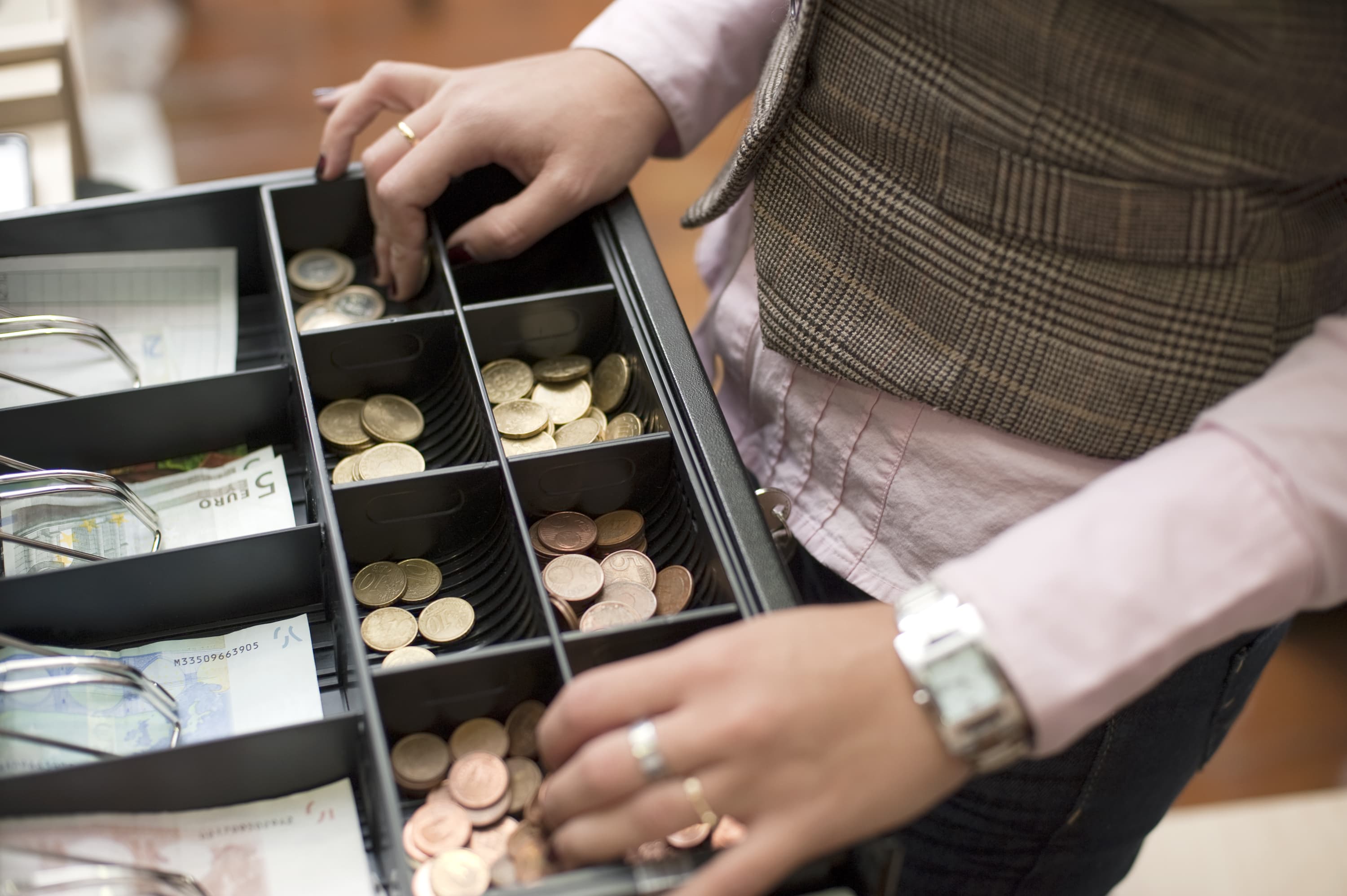How to Ensure Accurate & Precise Cash Handling

On this page
Though most brick-and-mortar retailers realize the importance of the security and accuracy of transactions that involve cash, far fewer have processes in place that are specifically designed to mitigate their risk and exposure to costly cash-handling errors.
Incorporate these basic but effective operational standards into your store's cash-related procedures to ensure accurate and precise cash handling.
Train staff to reduce the risk of error
You know that tasking trustworthy members of your staff to handle cash is a hallmark of optimal cash-handling procedures, but even the most skilled and careful cash handlers can introduce innocent but costly human error when managing cash transactions.
Train your staff to adopt techniques that can reduce basic counting errors. For example, require that at least two members of your staff (ideally, one is a manager) partner to "spot check" one another and count drawers midday, as a standard process. Before your store opens for business and when it closes at night, have at least two members of your team record the number of bills and coins in drawers - keep a log that specifies the time and date the count took place. Train cash handlers to count each drawer individually, and then together as a team aloud. (Each drawer is counted and verified a minimum of three times).
Instill processes for safe and bank deposits
Your store's policies and procedures should explicitly outline the maximum amount of cash that's allowed to remain in the point-of-sale drawers before it must be moved into a locked safe on premise.
Additionally, your policies should state how long cash is allowed to sit in the safe before a formal bank deposit must be made. When either transaction happens, require at least two employees to verify the amount of cash being deposited in a written log, and initial that they have counted and verified the amount. Protect your employees from the risk of theft by requiring that they make bank trips with another employee.
Specify processes for cash discrepancies
Mandate your store's internal controls for handling cash count discrepancies. While a cash register drawer that is off by $20 compared to the day's sales could be caused by human error, a discrepancy of several hundred dollars is likely a more serious issue. Specify how employees who realize an error are to report the finding - when, to whom and how the matter will be investigated.
If you discover an issue with internal theft, it's important that you have a policy in place specifying exactly what the process entails - for your employee's knowledge and your protection if an employee's activity proves suspicious (and legal action follows).
Invest in automated tools to reduce error
Cash transactions provide multiple benefits to your store. Not only do cash transactions mean you assume little risk of exposure to fraudulent forms of payment, it supports your business's cash flow. But cash inherently introduces risk: Bills can stick together, cash can get lost, your store could be robbed, and change can be given incorrectly. Invest in cash-handling tools that help to minimize such errors, and improve the security of your cash handling. Basic bill verifying safes, for example, can ensure that cash counts are accurate, recognized and reported in real-time for improved internal controls.
Cash handling isn't complicated, but it does require that your business is proactive in outlining the processes and procedures that reduce your risk, and ensure that the cash you earn remains with your business.
About the author: Wes Wernette manages marketing at FireKing Security Group in New Albany, Indiana. The company specializes in security products and services that protect business assets. This includes locksmith services, safes, cash management safes and more.
Join the #retail conversation on Twitter @RetailNext, as well as at www.facebook.com/retailnext.
About the author:

Wes Wernette, FireKing